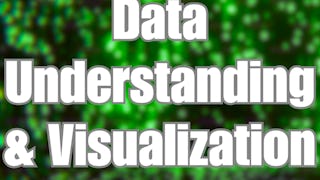This course provides a comprehensive introduction to data analysis, focusing on the understanding and interpretation of data sets. Students will learn to describe data sets, characterize variables, create and interpret graphs, and identify and interpret frequency distributions using jamovi. The course also emphasizes the critical evaluation of data presentation, teaching students to discern the appropriate use and potential misuse of graphs.



How to Create and Explore a Data Set
This course is part of Data Exploration in Psychology Specialization

Instructor: Mike Stadler, PhD
Included with 
Recommended experience
Recommended experience
What you'll learn
Describe the elements and structure of a data set.
Give examples of the effective use of frequency distributions.
Learn operation and use of jamovi to create and navigate a data set and generate its frequency distributions,
Details to know

Add to your LinkedIn profile
13 assignments
See how employees at top companies are mastering in-demand skills

Build your subject-matter expertise
- Learn new concepts from industry experts
- Gain a foundational understanding of a subject or tool
- Develop job-relevant skills with hands-on projects
- Earn a shareable career certificate


Earn a career certificate
Add this credential to your LinkedIn profile, resume, or CV
Share it on social media and in your performance review

There are 7 modules in this course
This module introduces you to your PsycLearn Essentials course. Find out what’s included in this course and how to navigate the modules and lessons. You’ll also learn valuable study tips for successful learning.
What's included
7 readings
This module provides a variety of information and tools from the American Psychological Association (APA) that will help inspire you as you complete your coursework and plan your career goals. Get discounted access to Academic Writer, APA’s online tool for writing effectively, as well as valuable advice that will help you develop and strengthen your skillset for learning success and future employment. Additionally, explore resources on various psychological issues. This module also includes APA resources on scholarly research and writing; a list of sites providing valuable resources on diversity, equity, and inclusion in psychology education and in the professional community; resources on a career in psychology; and links to career opportunities at the APA. You can also view videos that offer tips on dealing with stress.
What's included
8 readings
Once data have been collected, we must confront the question, “How do we summarize these data clearly and efficiently?” Graphs can help answer this question. We will explore the use and misuse of graphs, along with applications of the most common types of graphs.
What's included
1 video1 reading
There is much talk around the world about big data and analytics. Imagine the amount of data that big companies have stored up by recording every interaction with a customer. What did the customer search for? What did the customer purchase? How much does a given customer spend in an average order, or over the course of a year? The data must be organized and structured in very particular ways or it would be worthless. The same is true of observations in psychological science, or any science. The observations must be collected and stored in an organized way so that they may be useful for later analysis. This module introduces basic concepts about how data sets are organized and inspected.
What's included
4 videos4 readings6 assignments
This module explores the general nature of graphical representations of data and their usefulness, and then specifically explores the use of frequency distributions for different types of data.
What's included
2 videos4 readings3 assignments
In this module, we explore the use of bar graphs and histograms to describe a data set. We also introduce the jamovi statistical analysis software program, which we then use to create bar graphs and histograms.
What's included
7 videos2 readings3 assignments
What's included
10 readings1 assignment
Instructor

Offered by
Explore more from Data Analysis


CertNexus


University of Michigan


University of Colorado Boulder


University of Pennsylvania
Why people choose Coursera for their career




New to Data Analysis? Start here.

Open new doors with Coursera Plus
Unlimited access to 10,000+ world-class courses, hands-on projects, and job-ready certificate programs - all included in your subscription
Advance your career with an online degree
Earn a degree from world-class universities - 100% online
Join over 3,400 global companies that choose Coursera for Business
Upskill your employees to excel in the digital economy
Frequently asked questions
Access to lectures and assignments depends on your type of enrollment. If you take a course in audit mode, you will be able to see most course materials for free. To access graded assignments and to earn a Certificate, you will need to purchase the Certificate experience, during or after your audit. If you don't see the audit option:
The course may not offer an audit option. You can try a Free Trial instead, or apply for Financial Aid.
The course may offer 'Full Course, No Certificate' instead. This option lets you see all course materials, submit required assessments, and get a final grade. This also means that you will not be able to purchase a Certificate experience.
When you enroll in the course, you get access to all of the courses in the Specialization, and you earn a certificate when you complete the work. Your electronic Certificate will be added to your Accomplishments page - from there, you can print your Certificate or add it to your LinkedIn profile. If you only want to read and view the course content, you can audit the course for free.
If you subscribed, you get a 7-day free trial during which you can cancel at no penalty. After that, we don’t give refunds, but you can cancel your subscription at any time. See our full refund policy.
More questions
Financial aid available,

